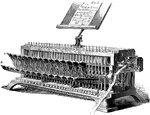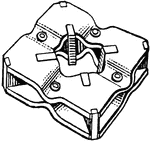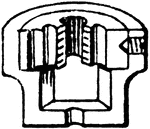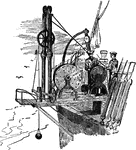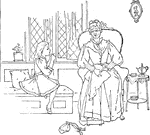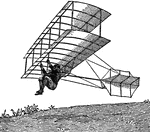
Distaff and spindle
A spindle is a cone shaped weigh that hooked the thread to one end and would allow the person to spin…

Vertical Cane Mill
"The accompanying engraving is an illustration of a new style vertical mill in which an attempt is made…
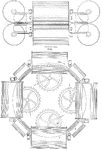
Decorticator
"Decorticator for ramie, jute, hemp, flax, and other textiles in green stalks. The machine is quadruple…
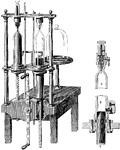
Kravogl's Air-pump
A machine designed to suppress the dead space which limits the efficiency of ordinary air-pumps.
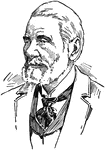
Richard Jordan Gatling
Dr. Richard Jordan Gatling (September 12, 1818 - February 26, 1903) was an American inventor best known…
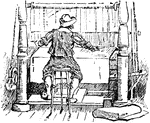
Man and Loom
An illustration of a man using a loom. A loom is a machine or device for weaving thread or yarn into…
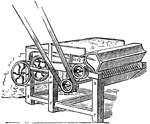
Cotton Gin
A Cotton Gin (short for cotton engine) is a machine that quickly and easily separates the cotton fibers…

Pile Driver
This pile driver is powered by a horse. The horse will pull a cord that raises the weight. When the…
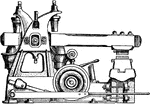
Horizontal Steam Power Hammer
A trip hammer resembles a hand-hammer held in a horizontal position. The hammer is placed at the end…

Vertical Steam Hammer
In 1838, Nasmyth, of England, planned his really great invention — the steam-hammer. His idea…

Foot-power Wood-working Lathe
A lathe is a machine tool which spins a block of material to perform various operations such as cutting,…

Large Power Lathe
A lathe is a machine tool which spins a block of material to perform various operations such as cutting,…
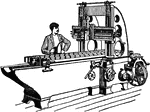
Iron Planer
A planer is a type of metalworking machine tool that is analogous to a shaper, but larger, and with…
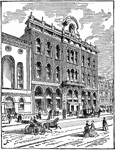
Tammany Hall
Tammany Hall was the Democratic Party political machine that played a major role in controlling New…
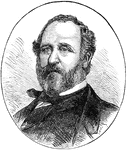
William Marcy Tweed
William M. Tweed (April 3, 1823 – April 12, 1878), sometimes informally called Boss Tweed, was an…

A United States protected Cruiser at Sea
Protected cruisers were a type of naval cruiser of the late 19th century, so known because their deck…
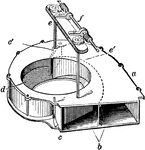
Hydraulic Scroll
"Hydraulic Scroll. a, case, inclosing center-discharge turbine water-wheel; b, openings for inflow of…

Scroll Wheel
"a, scroll-wheel, intermeshing with the pinion b, which, sliding by a feather on the shaft, c, imparts…
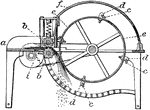
Scutcher
"Scutching-machine or Scutcher for Flax. a, feed-table on which the flax is fed to the fluted rollers…
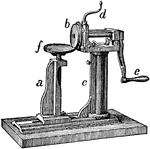
Seaming Machine
"Seaming-Maching. (a), vertical shaft and support, horizontally adjustable, and carrying at the top…

Heron's Fountain
An illustration of Heron's fountain. Heron's fountain is a hydraulic machine invented by the first century…
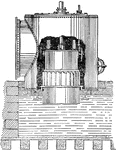
Hercules Turbine
"In the "Hercules" turbine...the flow is what is called mixed, that is, it is partly a radial inward…
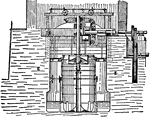
Jonval Turbine
"This turbine was designed to give 1250 H.P. with a fall of 25 ft. and an efficiency of 77%. It is fitted…

Jacquard Machine and Harness
Originally the Jacquard machines were mechanical, and the fabric design was punched in pattern cards…
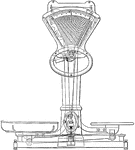
Price Computing Weighing Machine
An illustration of a price computing weighing machine using an even even balance and pendulum.
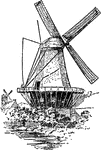
Windmill
A windmill is a machine that is powered by the energy of the wind. It is designed to convert the energy…

Windmill
A windmill is a machine that is powered by the energy of the wind. It is designed to convert the energy…

Sectional View of a Carder
An sectional illustration of a carding machine. Carding is the processing of brushing raw or washed…

Seismoscope
"Seismoscope. a, heavy mass supported by loop at point near center of gravity; b, point on which upper…
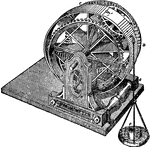
Dynamometer
A dynamometer or "dyno" for short, is a machine used to measure torque and rotational speed (rpm) from…
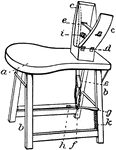
Sewing Horse
"Sewing-horse. In saddlery, a sewing-clamp with its supports. a, seat; b, legs; c, c', clamping-jaws,…
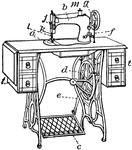
Singer Sewing Machine
"Singer sewing-machine. a is the frame and cloth-plate or bed-plate; b, arm; c, treadle; e, pitman;…
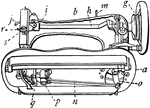
Singer Sewing Machine
"Singer sewing-machine. a is the frame and cloth-plate or bed-plate; b, arm; ... g, small driving-wheel…
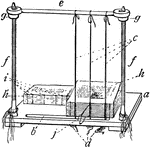
Sewing Press
Used in bookbinding. "Sewing-press. a, table with slot b, through which the cords c pass; d, staples…

A Sugarcane Mill
In a sugarcane mill, sugarcane is washed, chopped, and shredded by revolving knives.
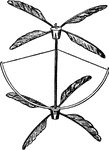
Cayley's Flying Model
"A and B...are two corks, into each of which r inserted four wing feathers from any bird, so as to be…

Langley's Flying Machine
An illustration of Langley's flying machine. A, Large airplane; b, small airplane; c, propelling screws.

Side Delivery Rake
"Side-delivery rake, a horse-rake in which the rake is suspended between the axle of the pair of wheels…



